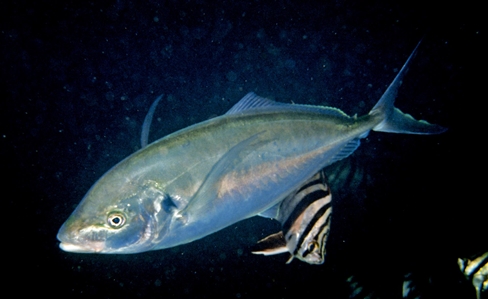General Description
Body deep, oval, compressed, tail base very slender; pectoral fins long, slender, scythe-like, reaching almost to straight part of lateral line; enlarged bony scales present at rear end of lateral line; hind margin of upper jaw nearly vertical; scales absent below and before eye. Greenish-blue above, silvery below, with a rather large diffuse black spot on upper margin of gill cover; juveniles and subadults usually with a yellow mid-lateral stripe and a faint yellow stripe along dorsal and anal-fin bases. Previously confused with Pseudocaranx dentex which is not found in Australian waters. To 94 cm.
Biology
Large mobile schools of Silver Trevally move in and out of estuaries, and often hang around jetties and piers.
Habitat
Coastal waters and bays, often near rocky areas, in depths of 0-30 m.
Reefs
Open water
Distribution guide
New Zealand and southern Australia.
Species Group
Fishes › Trevallies and allies
Depth
Water Column
Max Size
94 cm
Commercial Species
No
Global Dispersal
Recorded in Australia
Conservation Status
- DSE Advisory List : Not listed
- EPBC Act 1999 : Not listed
- IUCN Red List : Not listed





